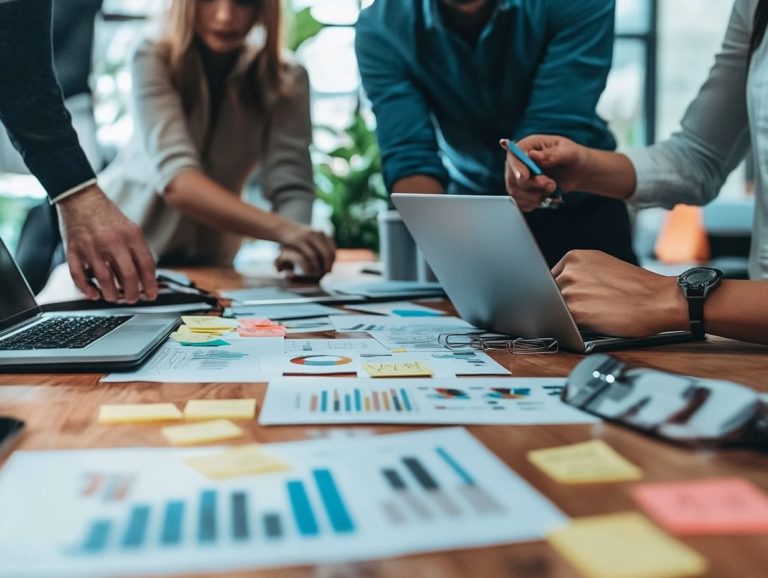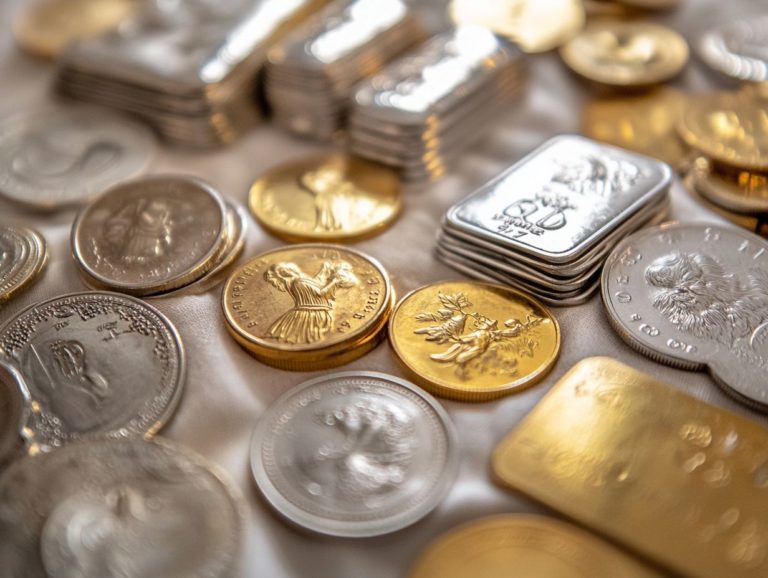What to Know About Trade in Precious Metals?
Investing in precious metals is a popular way to diversify your financial portfolio and protect your wealth.
From gold and silver to platinum, these metals offer unique benefits for your investments.
However, like all investments, they come with their own risks.
Get ready to dive into the exciting world of precious metals!
This article covers the types of precious metals, their advantages, market volatility, and how to start trading.
Contents
- Key Takeaways:
- Types of Precious Metals
- Benefits of Investing in Precious Metals
- Risks and Considerations
- How to Get Started with Precious Metals Trade
- Frequently Asked Questions
- What is considered a precious metal in trade?
- What factors influence the price of precious metals in trade?
- How is the value of precious metals determined in trade?
- What are the different ways to trade in precious metals?
- Are there any risks involved in trading precious metals?
- Do I need any special licenses or permits to trade in precious metals?
Key Takeaways:
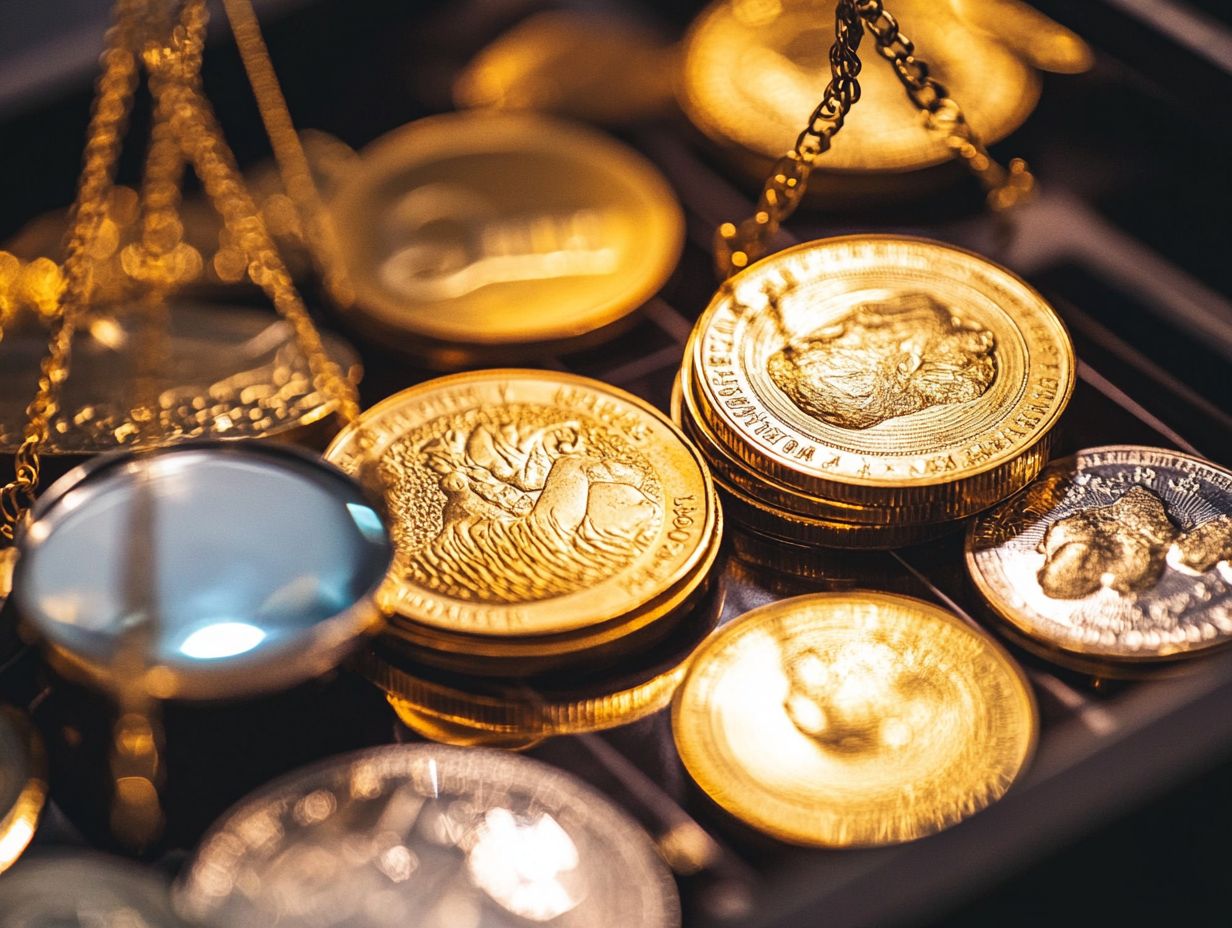
- Diversify your portfolio with gold, silver, and platinum.
- Consider market volatility before trading precious metals.
- Learn the steps and resources needed to start trading.
What are Precious Metals?
Precious metals like gold, silver, platinum, and palladium are rare elements with significant economic value.
They are often used as safe haven assets in investment portfolios.
Their value comes from factors like scarcity, making them attractive for protecting your money from losing value.
These metals also have important industrial uses in areas like automotive parts and renewable energy.
For example, gold is invaluable in electronics due to its conductivity and resistance to corrosion.
Silver is crucial in solar panels and medical devices.
Platinum and palladium help reduce vehicle emissions with catalytic converters.
Types of Precious Metals
Precious metals include gold, silver, platinum, and palladium, each with unique properties and investment potential.
These metals can unlock financial opportunities for both seasoned and new investors.
Gold, Silver, Platinum, and More
Consider gold, silver, platinum, and palladium to diversify your investments and protect against market changes.
Each metal has its own market behavior and historical significance.
Gold is a safe haven during economic downturns and responds well to inflation.
Silver balances investment use and industrial applications.
Platinum’s value can fluctuate based on automotive demand, while palladium is rising in importance due to new technologies.
Incorporating these assets helps balance your portfolio and manage risks effectively.
Benefits of Investing in Precious Metals
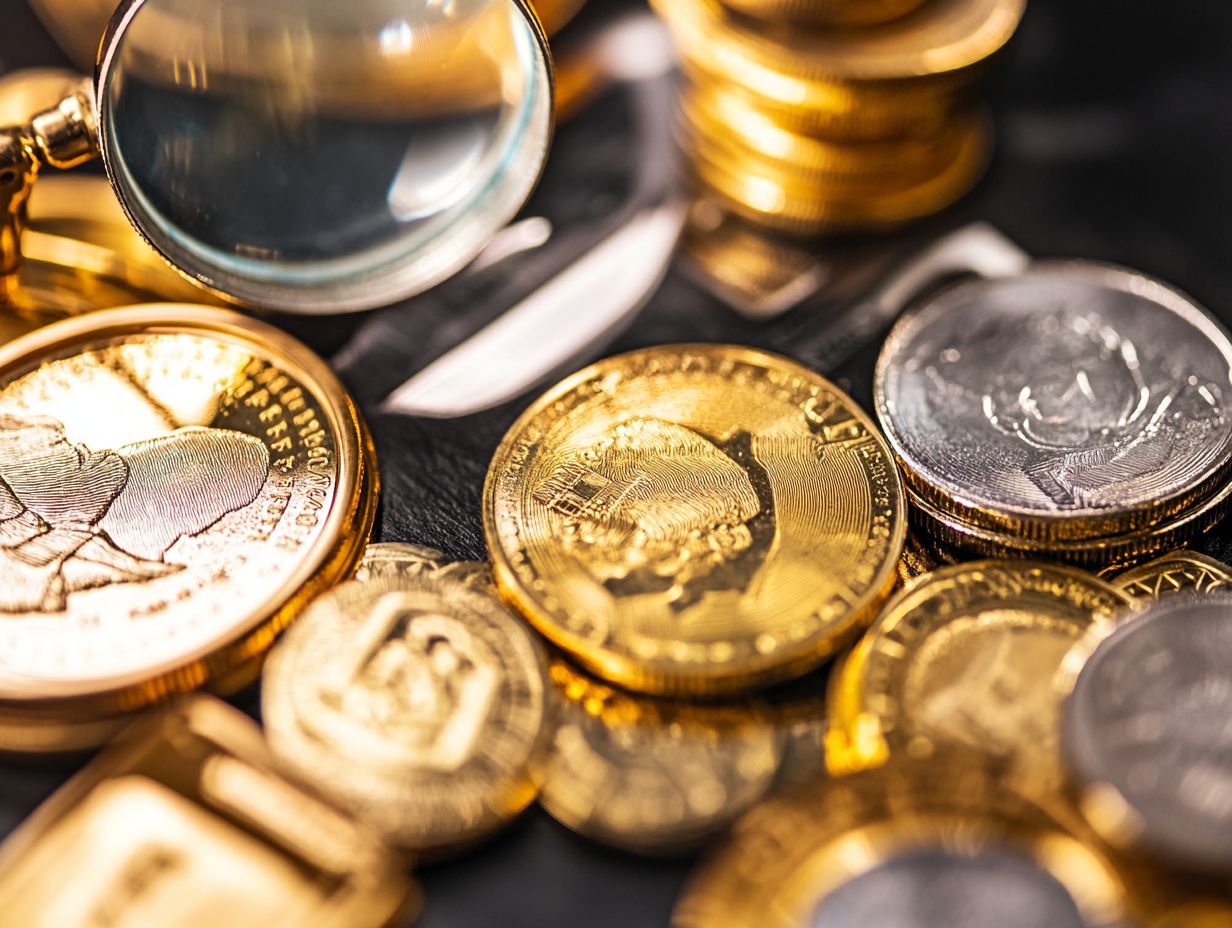
Investing in precious metals offers numerous advantages.
They can protect your wealth against inflation and provide stability during financial crises.
Adding precious metals to your portfolio allows for diversification and a buffer against market volatility.
Diversification and Stability
Diversifying your investment portfolio with precious metals not only helps reduce risks but also enhances overall stability. This is particularly important during periods of economic uncertainty and market volatility.
In today’s unpredictable financial landscape, you may find yourself increasingly recognizing the real value of incorporating commodities like gold and silver into your investments. These precious metals have a solid track record of serving as safe havens during economic downturns. They often maintain or even appreciate in value when traditional assets stumble.
By adding these tangible assets to your portfolio, you can cultivate a more balanced investment strategy. As inflation rises and currencies fluctuate, the stability these metals provide acts as a hedge, preserving your wealth while allowing for growth potential that complements your other investment choices.
Risks and Considerations
While you may view precious metals as a safe investment, it s essential to fully grasp the risks and considerations that accompany them.
Market volatility, price fluctuations, and potential geopolitical events can all significantly impact their value. Understanding these factors will better equip you to navigate the intricacies of investing in this arena.
Market Volatility and Other Factors
Market volatility and various factors, such as geopolitical tensions, can profoundly impact the price fluctuations of precious metals. This, in turn, influences your investment strategies and the overall stability of your portfolio.
Price swings are often set in motion by economic indicators, interest rate shifts, and currency strength. All of these shape the demand for assets such as gold and silver. Unforeseen events, whether natural disasters or political unrest, can introduce an element of uncertainty, often driving investors toward safe havens. This can result in significant price increases or sharp declines.
To effectively manage these investment risks, consider implementing strategies like:
- Diversifying across various asset classes,
- Utilizing stop-loss orders (orders that automatically sell your investment if it drops to a certain price), or
- Investing in funds that allow you to invest in precious metals without physically owning them.
These approaches help mitigate potential losses and provide a layer of protection during times of heightened volatility.
How to Get Started with Precious Metals Trade
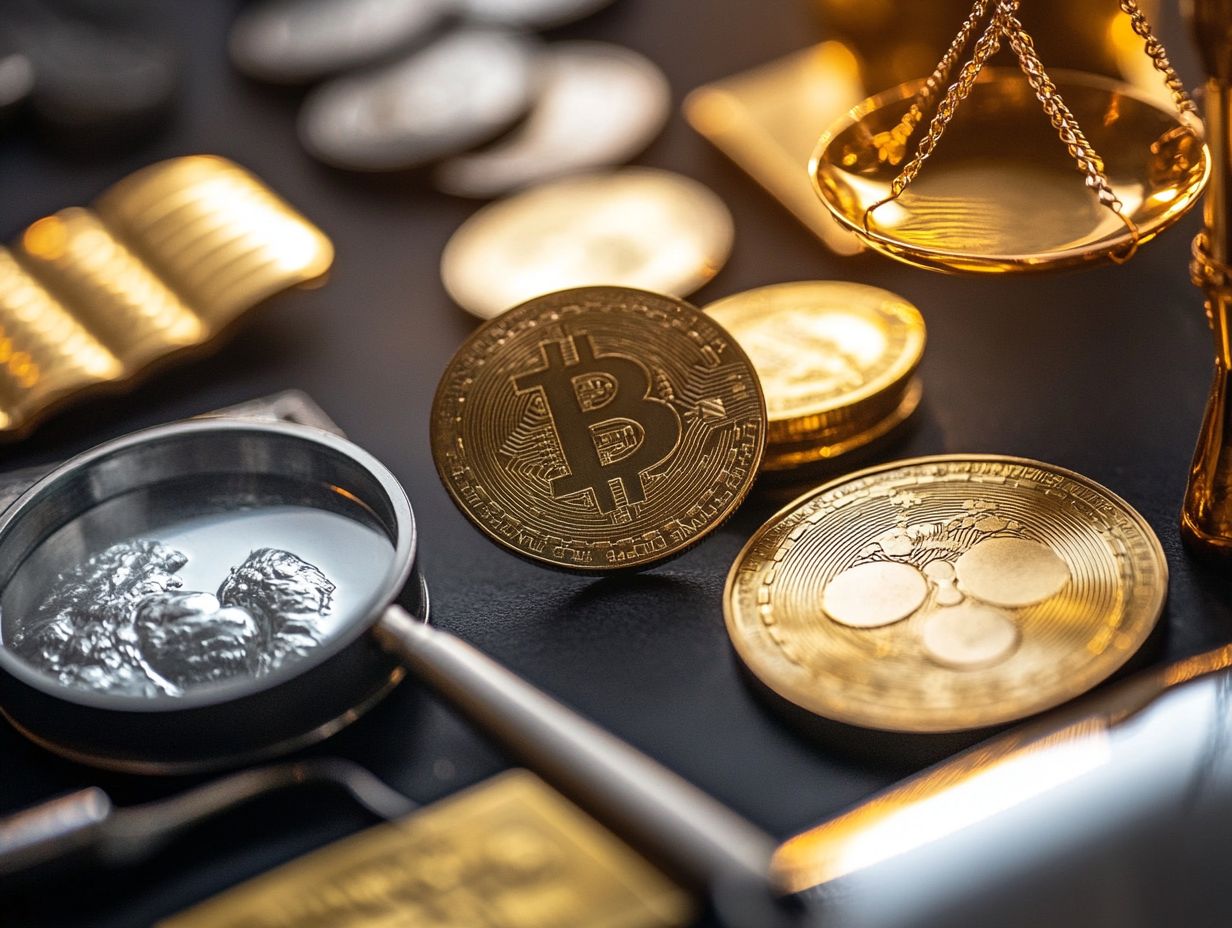
Start your journey into precious metals trading today! It’s essential to grasp the diverse investment opportunities available to you.
This entails outlining the necessary steps to take and leveraging the right resources to curate a well-informed investment portfolio.
With a clear strategy in place, you can navigate the complexities of this market with confidence and purpose.
Steps to Take and Resources to Use
To successfully invest in precious metals, you need to follow a series of deliberate steps. Start by identifying trustworthy resources, selecting the right investment vehicles, and adeptly managing your investment portfolio.
Your journey begins with thorough research into the various types of precious metals gold, silver, platinum, and palladium. Gain a solid grasp of their market trends. As a new investor, harness the power of online platforms and resources, such as market analysis websites, industry reports, and financial news outlets, to stay well-informed.
When considering investment vehicles, explore options like:
- Exchange-traded funds (ETFs)
- Physical assets such as gold bullion
Each option comes with its own unique advantages and risks. Tools like price tracking apps can help you monitor market movements, enabling you to make informed decisions. Engaging with forums and communities dedicated to precious metal investing can also offer invaluable insights and real-world experiences from seasoned investors, enriching your understanding and strategy.
Frequently Asked Questions
What is considered a precious metal in trade?
Precious metals are rare and valuable because they are used in trade and commerce. The most commonly traded precious metals are gold, silver, platinum, and palladium.
Don t wait! Take these steps now to secure your financial future!
What factors influence the price of precious metals in trade?
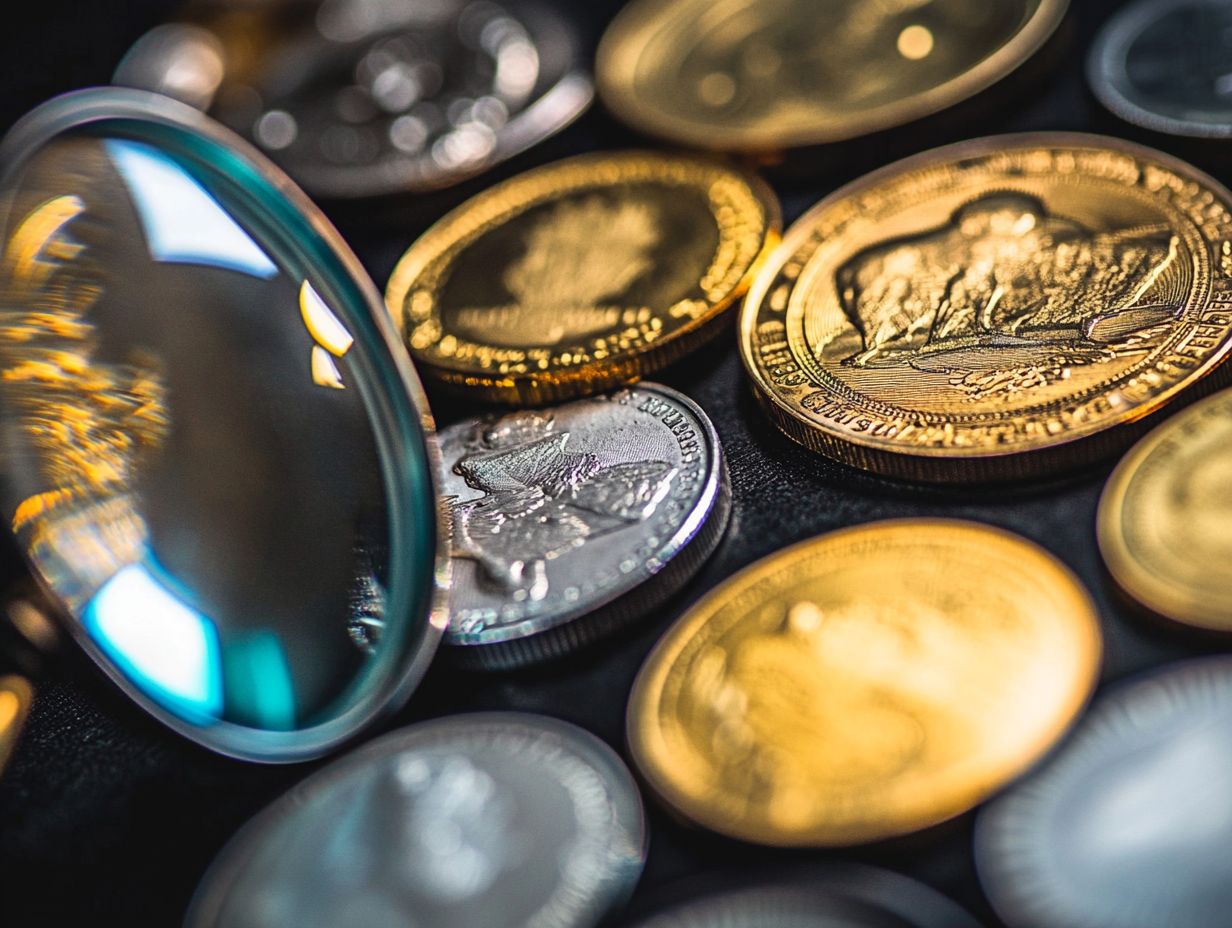
Many factors affect the price of precious metals. Supply and demand, economic conditions, political stability, and global events can all cause price changes in the market.
How is the value of precious metals determined in trade?
The value of precious metals depends on their weight and purity. Weight is measured in troy ounces, while purity indicates how pure the metal is, with 100% being pure.
What are the different ways to trade in precious metals?
You can trade precious metals in various forms. These include physical bullion, futures contracts, exchange-traded funds (ETFs), and options contracts, each with its own benefits and risks.
Are there any risks involved in trading precious metals?
Trading in precious metals carries risks similar to other investments. Price volatility, market fluctuations, and geopolitical events can all impact metal values, so it’s wise to diversify your portfolio.
Do I need any special licenses or permits to trade in precious metals?
Licensing requirements for trading precious metals vary by region. Research your local regulations to ensure you comply with all necessary rules before trading.



